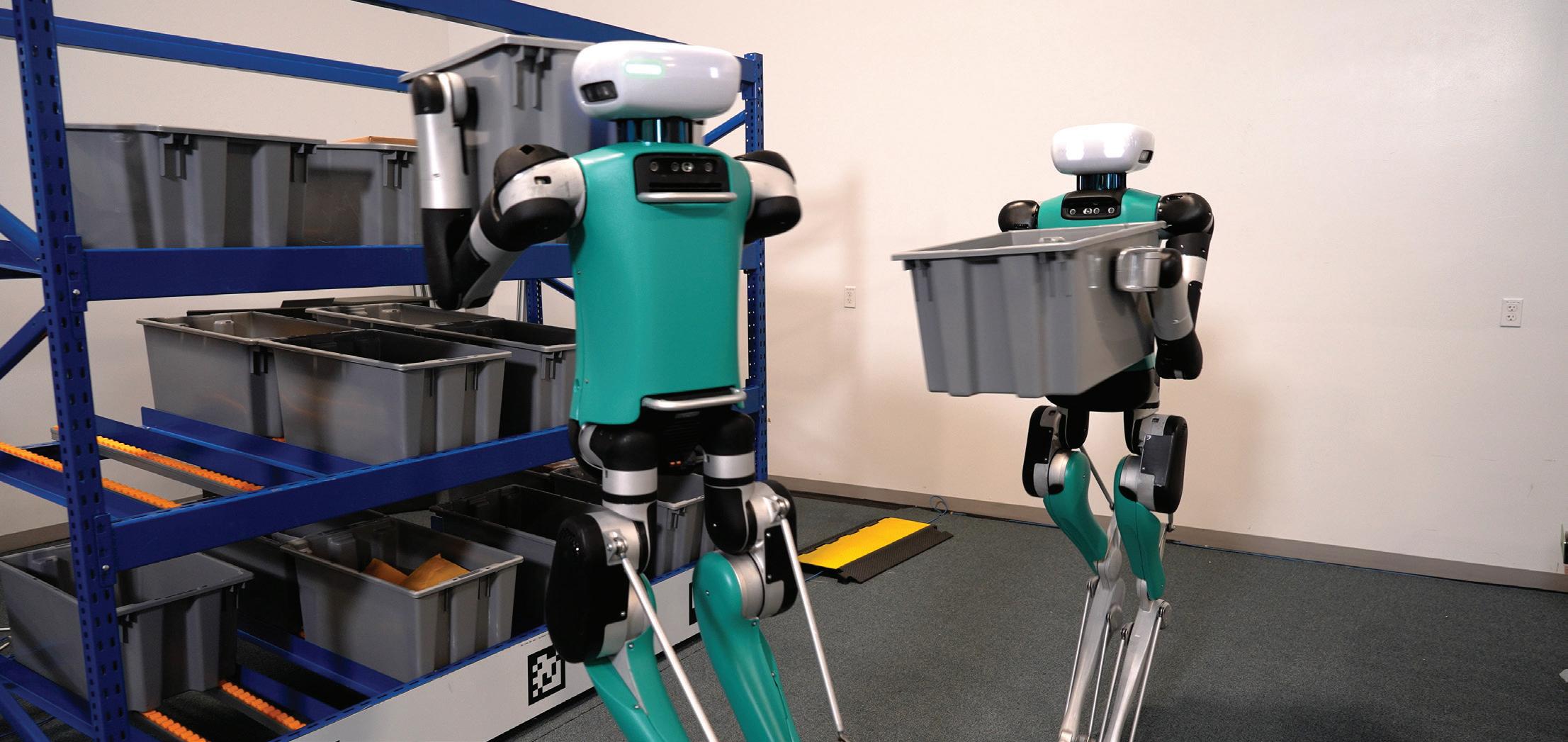
2 minute read
Humanoids ready to take first steps
Mike Oitzman | Editor, The Robot Report
The age of humanoids is just around the corner. Humanoids are a subset of robotics that feature a bipedal (two legs) design, functional arms and “hands,” a torso and a head. It's not necessary for these robots to recreate human hands and fingers, but rather to be able to interact with a world designed for humans.
Humanoids have long been relegated to research labs, but the goalposts recently began to shi . Companies are now creating humanoids to perform various real-world tasks. This means humanoids can operate in environments designed for humans and work alongside humans.
In the short term, basic tasks for humanoids will include picking up and moving items either individually or contained within totes or boxes. Advanced functions will eventually include manipulating door knobs, opening and closing doors and drawers, and using tools designed for humans.
We will be hosting a keynote panel at RoboBusiness 2023 to discuss the state of humanoids. Jeff Cardenas, co-founder and CEO of Apptronik, Jonathan Hurst, co-founder and chief robot o cer of Agility Robotics, and Geordie Rose, co-founder and CEO of Sanctuary, will explore the technological breakthroughs that are propelling humanoids into the real world. They'll share their firsthand insights into the challenges and opportunities that lie ahead and discuss the industries poised to be early adopters of these remarkable creations.
Let's look at some of the humanoids that will soon be released and some of the challenges involved with developing these advanced systems.
Real humanoids won't be like the movies
While humanoids like the Terminator have long entertained us in movies, creating a functional humanoid for the real world remains a difficult task. Power consumption, power-to-weight optimization, mechanical stiffness, edge computing, component reliability and safety are some of the major engineering constraints of the humanoid design.
For decades, roboticists have worked to perfect humanoids, displaying numerous prototypes and working models. Some researchers have spent their careers perfecting bipedal locomotion or hand design, while others have attempted to program artificial intelligence to give the robots a believable personality that crosses the uncanny valley.
One of the most famous humanoids was Honda's ASIMO, which was first introduced in 2000. Unlike most modern humanoids, with the exception of Boston Dynamics Atlas, ASIMO was a heavyweight weighing in at 130 kgs (286 lbs).
Steps in the right direction
Several technical and engineering breakthroughs have occurred since the days of ASIMO, all of which are enabling lighter-weight designs, longer operating times and faster and more capable edge computing. Advances in battery chemistry, from the evolution of electric vehicles, provide the right balance of energy density and lower weight that are necessary to deliver longer runtimes for free-ranging humanoids.
Companies have developed edge computing platforms that can process and fuse sensor data onboard the robot while controlling all of its joints in real time. The processing power of a supercomputer can now be delivered in a small, lightweight form factor.
Artificial intelligence and machine learning have evolved so quickly in the last decade that the upcoming generation of humanoids will be able to learn quickly and respond to changes in their environment. This functionality is necessary if this class of robotics is to achieve its goal of being multi-purpose.
For this next generation of humanoids, developers have a highly capable set of technologies to leverage as they push the







